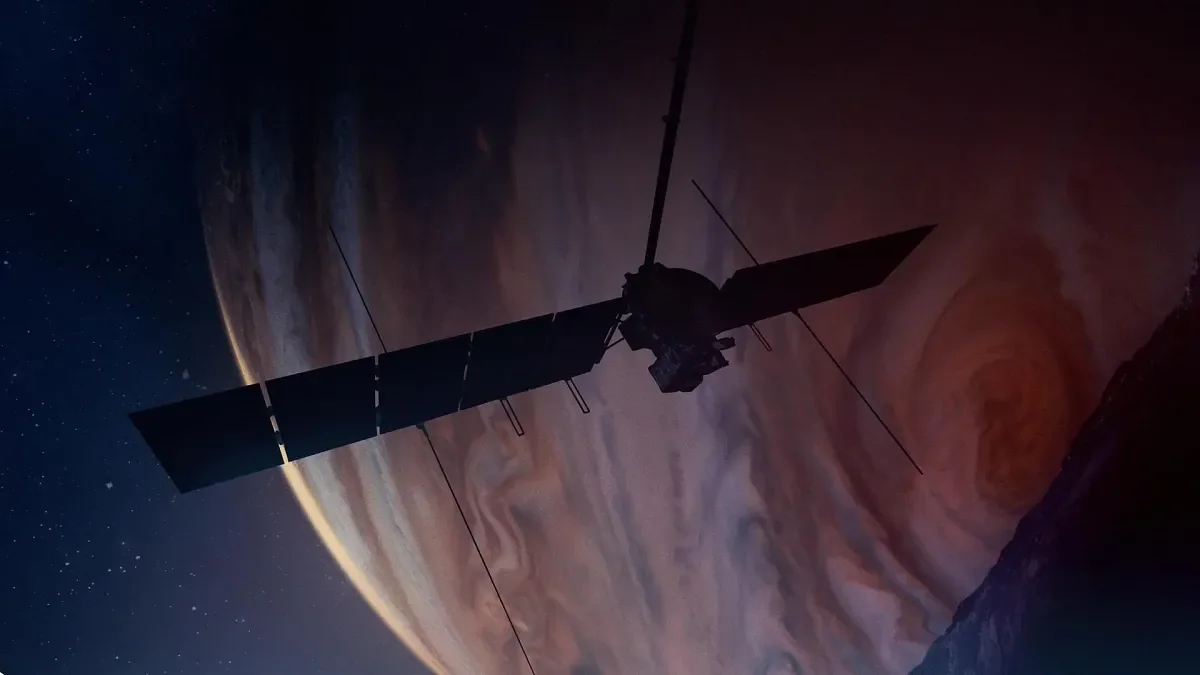
October 14, 2024 - 12:01pm
A comparative planetologist in the College of Arts and Sciences helped develop one of the scientific instruments aboard NASA’s Europa Clipper, which blasted off Oct. 14 on the world’s first mission to conduct a detailed study of Jupiter's moon Europa.
Carol Paty, professor of Earth sciences, is a member of the research teams behind two of the nine scientific instruments the spacecraft will use to confirm and measure what scientists strongly suspect is a vast sea of salty water buried under a sheet of ice enveloping the moon’s surface.
After a delay due to Hurricane Milton, which made landfall Wednesday, Oct. 9, and was expected to pass directly over Kennedy Space Center, the spacecraft successfully left Earth’s atmosphere at 1 pm Eastern and began its six-year journey to Jupiter’s moon. Paty attended the launch with undergraduate student Erin Morrison, a multidisciplinary science and journalism double major who focused her undergrad thesis on the Europa Clipper mission.

The ultimate goal of the mission, Paty says, is to determine whether there could be life on Europa.
“That idea of understanding the habitability or characterizing the subsurface ocean in terms of the thickness of the ocean, the salinity of the ocean, how deep beneath the ice shell the ocean is,” Paty said, “is all going to be important for determining whether or not that subsurface ocean is a habitable environment, a place that could have harbored the evolution of life.”
Paty’s research involves creating models to help provide context for and interpret observational data, specifically in terms of quantifying the influence of Jupiter’s magnetic field on Europa.
“Electrons and ions feel changes in magnetic fields, and the motion of those charged particles in the conductor is going to generate a current, whether the conductor is a copper pipe or a subsurface ocean on Europa,” Paty explained.
Paty noted the mission builds on decades of space exploration, from Voyager 2 to Galileo to Cassini. She has used data and observations from past space missions to Jupiter, along with comparisons to observations of Earth and other planets and moons, to help focus Europa Clipper’s inquisitive instrumentation.
The spacecraft will collect data to help scientists understand the depth and salinity of the subsurface ocean, as well as where Europa’s icy surface layer ends and the subsurface ocean begins.
“There are droves of scientists who would love to land on Europa, drill through the ice and really get to that subsurface ocean to put a little submarine down there and measure the heck out of it and see if we find black smokers and things like we see in the deep oceans on Earth,” Paty explained.
“But the thickness of the ice matters,” she said. “We don't have the capability to drill through 30 kilometers of ice. Do we have the capability to drill through five kilometers of ice? We might. So the question of the ice shell’s thickness is one that we're all going to be really excited to figure out.”
— By Nicole Krueger, College of Arts and Sciences, and Mark Furman, University Communications
